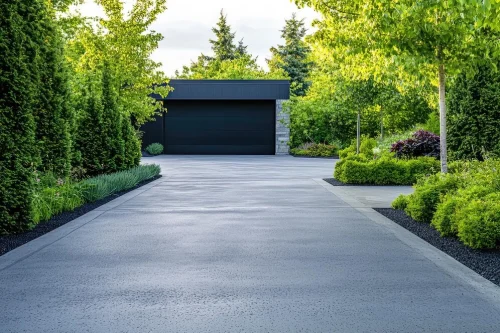
What is Coarse Aggregate? Types, Importance & Properties
April 25, 2025
Marble or Granite: Which Is Best for Your Home and Kitchen?
April 28, 2025If you're building or buying a home, you're probably having rounds of discussions about tiles, wall colors, furniture dimensions, and perfect kitchen laminates. But one topic that rarely makes it into the conversation early on is concrete strength, especially the flexural strength of concrete. Most people assume that “strong concrete” is enough. But strength isn't just about how much load concrete can bear. It’s also about how well it handles movement, weather changes, and everyday stress. That’s where flexural strength comes in.
Read ahead to learn about flexural strength of concrete, why it matters, and how it affects your home’s durability and long-term value.
What is Flexural Strength of Concrete?
Flexural strength refers to the concrete’s ability to resist bending. Bending refers to how the concrete behaves when it is stretched or pushed in different directions. It is different from compressive strength, which measures how much weight the concrete can support before it gets crushed. Flexural strength in concrete is what helps your concrete slabs stay strong when there’s movement in the ground or when things press down on them.
This happens when:
- The soil beneath the slab moves or settles unevenly.
- Vehicles drive over the surface.
- Temperature changes cause the concrete to expand or contract.
In these situations, concrete needs the ability to resist cracking and remain stable. That’s exactly what flexural strength helps with.
Where Flexural Strength of Concrete Matters Most in a Home
Flexural strength of concrete plays an important role in several parts of a residential structure. Some of the most affected areas include:
- Driveways and internal roads: Regular vehicle traffic causes repeated bending stress.
- Ground floor slabs: These are in contact with soil, which may move or settle.
- Terraces and balconies: These surfaces face weather exposure and temperature shifts.
Outdoor walkways: Without proper drainage, water can accumulate and weaken the surface over time.
How Flexural Strength of Concrete is Tested
To test flexural strength, engineers use a process called the third-point loading test:
- A concrete beam is supported at both ends.
- Force is applied in two spots between the supports.
- The beam bends until it cracks.
- The force it can withstand before cracking is measured as its flexural strength.
What Affects Flexural Strength?
Several factors can impact the flexural strength of concrete:
1. Mix Proportions
The ratio of cement, sand, water, and aggregates must be balanced. An improper mix can lead to weak, brittle concrete – even if it appears thick.
2. Water-Cement Ratio
Using too much water weakens the mix. It makes the concrete easier to pour but reduces both compressive and flexural strength.
3. Aggregate Quality
The size, shape, and texture of the stones or gravel matter. Angular, rough-textured aggregates bond better with cement than smooth, rounded ones.
4. Reinforcement
Steel mesh or fiber reinforcement helps control cracking and distributes stress more evenly. It’s especially useful in slabs and driveways.
5. Curing
Concrete needs to stay moist for at least 7 to 14 days after pouring. Poor curing can reduce strength by up to 20%, making the surface more prone to cracks.
Signs Flexural Strength of Concrete Was Ignored
If flexural strength issues may seem minor at first, but they allow moisture to enter and corrode the steel inside the concrete, leading to further damage.you might notice these issues:
- Hairline cracks on floors
- Damp patches on terrace slabs
- Water seepage through balcony edges
- Driveways cracking along the wheel paths
What to Ask Your Builder
You don’t need to be a construction expert to ensure flexural strength has been considered. Ask your builder the right questions – especially in cases where you're buying a ready-to-move-in home or an apartment in a gated community.
1. What grade of concrete is being used?
For slabs, driveways, and terraces, a mix grade of M25 or higher is usually more reliable.
2. Is reinforcement being added to slabs?
Ask whether steel mesh or fiber-reinforced concrete is being used. Both help reduce cracking and increase durability.
3. Has the mix design been tested in a lab?
A professionally tested mix gives confidence that the concrete can handle the expected stress. Request documentation if you're buying a larger property or building a home from scratch.
4. How long was the concrete cured?
A curing period of at least 7 days is essential. Ideally, it should be closer to 14 days for maximum strength.
5. Has the soil been tested?
Soil movement affects slabs significantly. If there’s no soil test, the foundation may be more vulnerable than it seems.
6. Are early cracks being inspected?
Ask your builder if early-stage cracking is being monitored. Small cracks should not be dismissed as normal – they can indicate poor flexural strength.
Final Words
Flexural strength is not just a technical detail. It’s what separates a strong, long-lasting surface from one that begins to crack and deteriorate within a few years. Before you finalize your home, make sure this crucial aspect of construction isn’t thoroughly checked overlooking flexural strength can compromise both safety and long-term value.
Pair that foundation with uPVC doors and windows that match in quality and performance. Explore GreenFortune for high-performance uPVC solutions built to complement strong, reliable homes.
FAQs
- Can flexural strength be improved after concrete is poured?
Inherent flexural strength in concrete that is already set can’t be changed. However, surface treatments, sealants, and proper maintenance can help reduce the impact of stress and delay damage. - Is flexural strength important for homes built on rocky soil?
Yes. Even on stable ground, factors like temperature changes and surface load (cars, furniture, people) can cause bending stress. Flexural strength is always relevant. - How does flexural strength relate to earthquake resistance?
While flexural strength isn’t the only factor in earthquake resistance, it contributes by allowing slabs and surfaces to absorb lateral movements without cracking. - Can lightweight concrete have good flexural strength?
It depends on the mix and reinforcement. Lightweight concrete can offer decent flexural strength if engineered with proper additives and reinforcements like fiber mesh.





